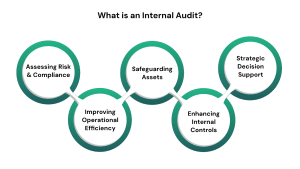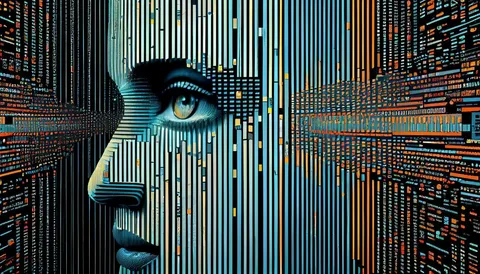A New Era of Creativity Powered by AI
The boundaries of human creativity are rapidly expanding with the integration of generative ai services into the creative industries. From aiding musicians in composing melodies to helping designers craft immersive visuals and artists generate expressive works, generative AI is becoming a powerful collaborator. No longer limited to automation and analytics, AI is now deeply embedded in the artistic process, reshaping what it means to create.
Generative AI services are fostering entirely new genres of digital expression and democratizing access to high-end creative tools—enabling even non-artists to participate in artistic innovation.
Visual Arts Meet Machine Intelligence
The visual arts landscape has been radically reshaped by the use of generative AI tools. Artists are co-creating with AI by inputting text prompts or partial sketches, allowing the system to generate unique and thought-provoking images. Platforms like Midjourney, DALL·E, and Artbreeder have surged in popularity, empowering creators to explore styles and compositions previously inaccessible due to technical limitations.
A 2024 report by Statista noted that over 60% of digital artists now incorporate some form of AI tool in their creative workflow, up from just 20% in 2021. This shift is not only accelerating output but also encouraging artists to break conventions and experiment with hybrid techniques.
While the debate around authenticity continues, the reality is clear: AI is becoming a partner in the visual storytelling process, not a replacement.
Music Composition and Sound Innovation
Generative AI is helping musicians reimagine composition and sound design. From creating background scores for games and films to assisting in writing lyrics and building harmonies, AI tools are becoming studio assistants for both emerging and established artists.
Tools like Amper Music, AIVA, and Google’s MusicLM offer musicians the ability to generate music in multiple genres, helping to overcome creative blocks and streamline production. This not only speeds up content creation but also lowers the cost of producing high-quality soundtracks.
According to a 2023 Deloitte report, music production powered by AI is expected to account for 30% of all commercial tracks used in marketing and gaming by 2026, highlighting the growing influence of generative ai solutions in the sonic arts.
Reimagining Digital and Product Design
In the design world, AI is enhancing human creativity rather than replacing it. From architecture and interior layouts to branding and UX/UI mockups, generative AI tools are improving efficiency and expanding conceptual possibilities.
Designers use AI to generate multiple iterations of visual assets, test user interactions, and even simulate design environments in real time. Software like Adobe Firefly and Autodesk Dreamcatcher allow for rapid prototyping and adaptive design based on user preferences and technical constraints.
The McKinsey Design Index (2024) revealed that companies integrating generative AI into design processes have seen up to 50% faster time-to-market for digital products, with a 30% increase in user satisfaction metrics. These figures highlight the tangible value of combining creativity with computation.
Ethical and Legal Considerations in AI-Generated Content
As generative AI becomes more ingrained in the creative world, questions about intellectual property and ethical use are intensifying. Who owns an artwork created jointly by an artist and an algorithm? What happens when AI replicates the style of a known artist without permission?
To address these concerns, some jurisdictions are drafting new legal frameworks that define ownership and usage rights for AI-generated content. Additionally, many platforms now embed transparency features, enabling creators to disclose AI involvement in their work.
While regulation is still evolving, most creators agree on one principle: the human touch must remain central in the creative process. Generative ai services should be viewed as amplifiers of human ingenuity, not replacements.
Creative Democratisation and Access
One of the most promising outcomes of generative AI is its role in democratizing creativity. Individuals without formal training can now experiment with music, design, and visual art through intuitive AI platforms. This has lowered entry barriers for aspiring creators, enabling new voices and ideas to emerge from non-traditional backgrounds.
Generative ai services are also being used in education, helping students learn design principles, musical structures, and visual storytelling in interactive ways. Schools and institutions are embracing AI tools to foster a more inclusive and accessible creative ecosystem.
The Future of Co-Creation
Looking ahead, the future of creative industries will likely be defined by collaboration between humans and intelligent systems. As generative ai solutions evolve, they will become more intuitive, capable of understanding emotional tones, cultural nuances, and contextual intent.
Rather than replacing artists and designers, AI will continue to offer new mediums and methods—pushing the boundaries of human expression. Companies and creators who adopt a mindset of co-creation will be better positioned to lead this next chapter of artistic innovation.
Conclusion
Generative AI is no longer an experimental novelty—it’s a vital component of the modern creative toolkit. Whether in studios, agencies, or individual workspaces, AI is enhancing creative capacity and enabling faster, more dynamic production. From generative visual art to AI-assisted music and product design, the creative industries are entering an exciting era of transformation and inclusion.
Those who embrace the capabilities of generative AI will not only increase their productivity but also redefine what it means to be creative in a digital-first world.




